Amit Jaiswal
Addressing Purchase-Impression Gap through a Sequential Re-ranker
Oct 27, 2020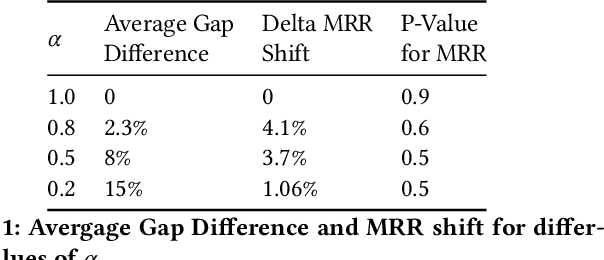
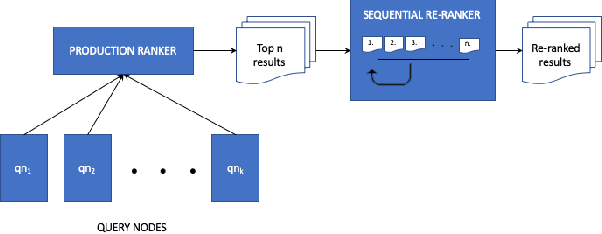
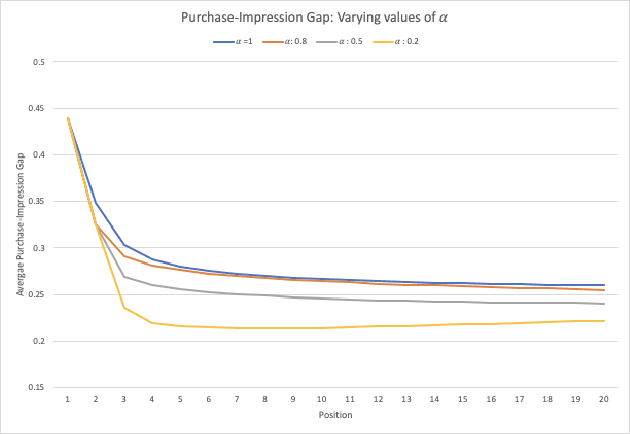
Abstract:Large scale eCommerce platforms such as eBay carry a wide variety of inventory and provide several buying choices to online shoppers. It is critical for eCommerce search engines to showcase in the top results the variety and selection of inventory available, specifically in the context of the various buying intents that may be associated with a search query. Search rankers are most commonly powered by learning-to-rank models which learn the preference between items during training. However, they score items independent of other items at runtime. Although the items placed at top of the results by such scoring functions may be independently optimal, they can be sub-optimal as a set. This may lead to a mismatch between the ideal distribution of items in the top results vs what is actually impressed. In this paper, we present methods to address the purchase-impression gap observed in top search results on eCommerce sites. We establish the ideal distribution of items based on historic shopping patterns. We then present a sequential reranker that methodically reranks top search results produced by a conventional pointwise scoring ranker. The reranker produces a reordered list by sequentially selecting candidates trading off between their independent relevance and potential to address the purchase-impression gap by utilizing specially constructed features that capture impression distribution of items already added to a reranked list. The sequential reranker enables addressing purchase impression gap with respect to multiple item aspects. Early version of the reranker showed promising lifts in conversion and engagement metrics at eBay. Based on experiments on randomly sampled validation datasets, we observe that the reranking methodology presented produces around 10% reduction in purchase-impression gap at an average for the top 20 results, while making improvements to conversion metrics.
Personalized Ranking in eCommerce Search
Apr 30, 2019

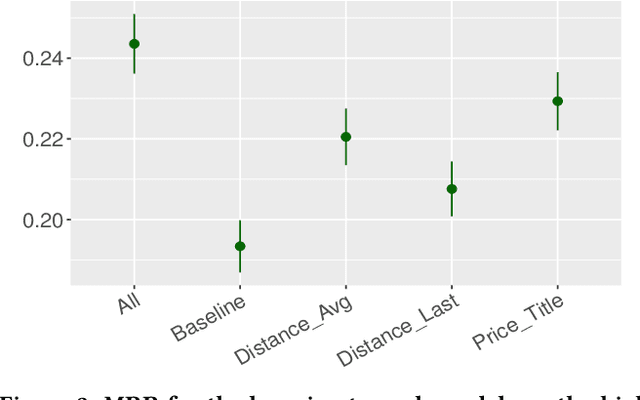
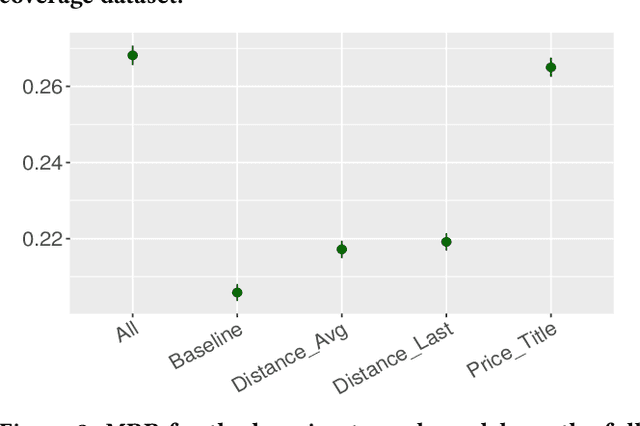
Abstract:We address the problem of personalization in the context of eCommerce search. Specifically, we develop personalization ranking features that use in-session context to augment a generic ranker optimized for conversion and relevance. We use a combination of latent features learned from item co-clicks in historic sessions and content-based features that use item title and price. Personalization in search has been discussed extensively in the existing literature. The novelty of our work is combining and comparing content-based and content-agnostic features and showing that they complement each other to result in a significant improvement of the ranker. Moreover, our technique does not require an explicit re-ranking step, does not rely on learning user profiles from long term search behavior, and does not involve complex modeling of query-item-user features. Our approach captures item co-click propensity using lightweight item embeddings. We experimentally show that our technique significantly outperforms a generic ranker in terms of Mean Reciprocal Rank (MRR). We also provide anecdotal evidence for the semantic similarity captured by the item embeddings on the eBay search engine.
 Add to Chrome
Add to Chrome Add to Firefox
Add to Firefox Add to Edge
Add to Edge